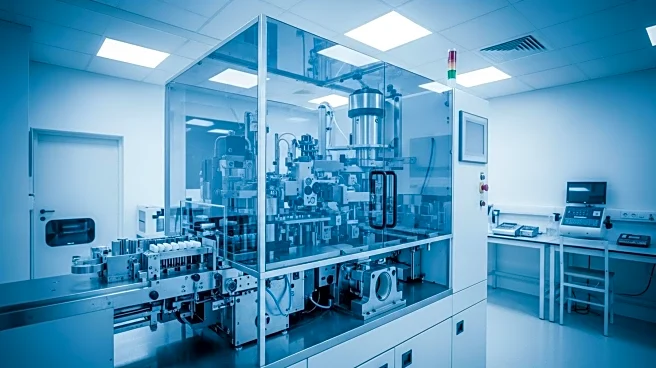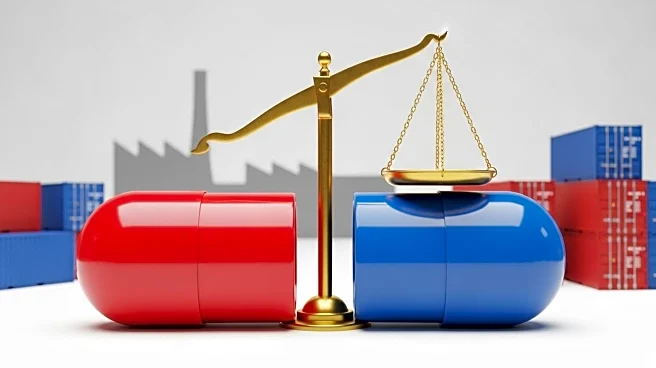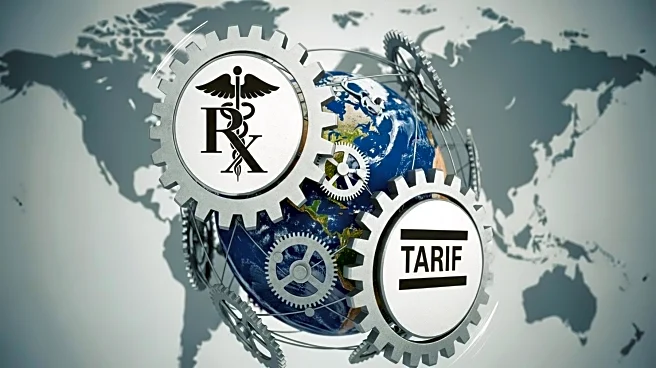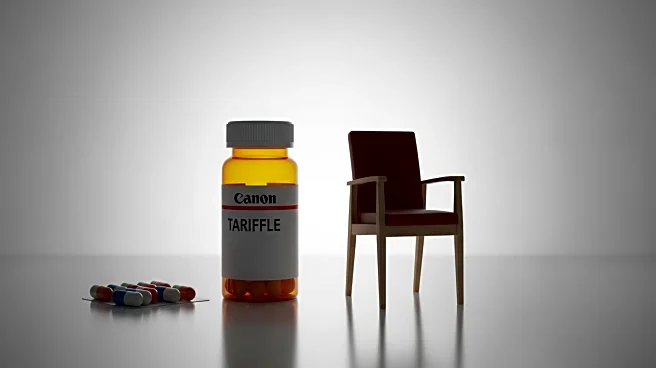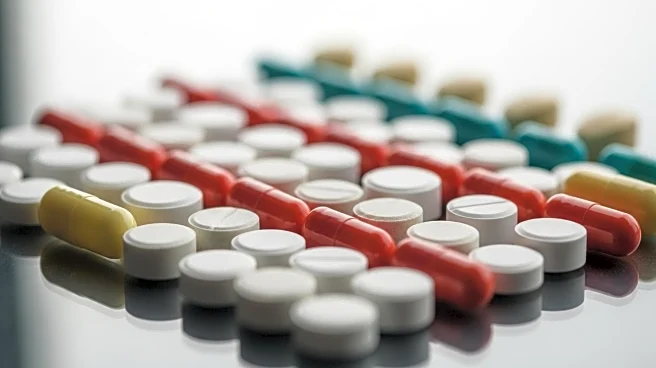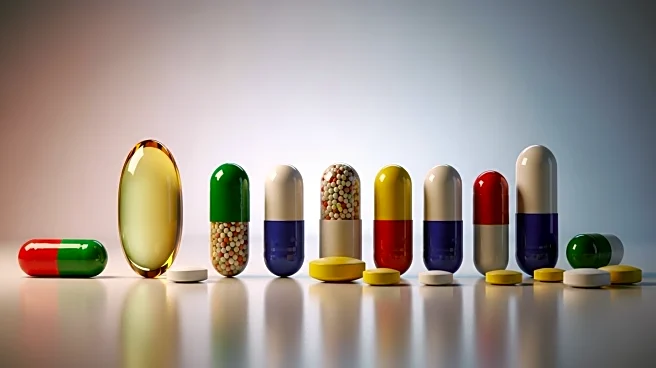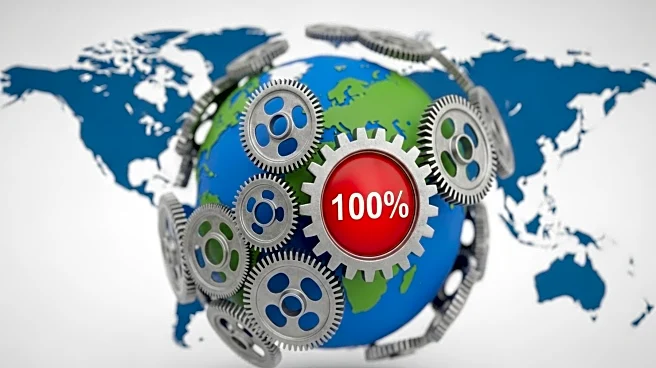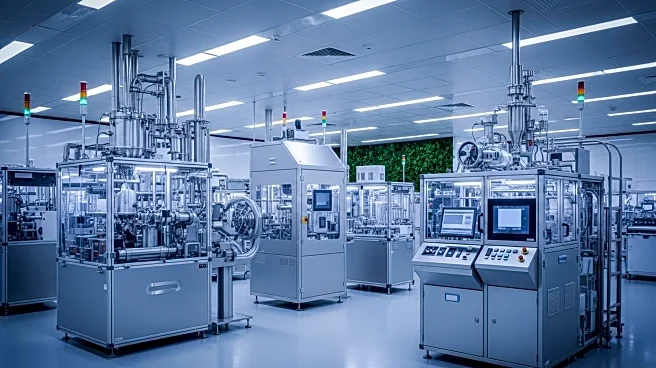What's Happening?
The United States, under the directive of President Trump, has announced a 100% tariff on imported branded or patented pharmaceutical products unless their manufacturers establish production facilities within the country. This policy, effective from October 1, aims to bolster domestic production and secure supply chains for essential medicines. The administration's strategy is to pressure pharmaceutical companies to relocate manufacturing to the U.S., thereby enhancing national autonomy in the pharmaceutical sector. Despite the tariffs, experts remain skeptical about their potential to significantly lower consumer prices or alter the market dynamics, given the global nature of pharmaceutical supply chains. In response, companies like Eli Lilly have announced substantial investments in U.S. production facilities, with plans for a $6.5 billion plant in Houston and another potential site in Virginia.
Why It's Important?
The imposition of these tariffs is a significant move in the U.S. trade policy, reflecting a broader strategy to reduce dependency on foreign pharmaceutical imports and enhance national security. This policy could potentially lead to increased drug prices in the short term, affecting consumers and healthcare providers. However, it also presents an opportunity for domestic job creation and economic growth within the pharmaceutical manufacturing sector. Companies with existing or planned U.S. facilities may benefit from this policy, while smaller firms or those without U.S. operations could face challenges. The policy underscores the administration's focus on reshaping trade dynamics to prioritize domestic production across various sectors.
What's Next?
The U.S. government plans to release further findings from a national-security investigation into drug imports, which could inform future tariff adjustments. President Trump has not ruled out the possibility of increasing tariffs to 250% if deemed necessary. The administration's approach includes a phased implementation to encourage domestic production while monitoring the impact on drug prices and availability. Stakeholders, including pharmaceutical companies and healthcare providers, will need to adapt to these changes, potentially influencing their strategic decisions regarding manufacturing and supply chain management.
Beyond the Headlines
This development highlights the complex interplay between trade policy and public health. While the tariffs aim to strengthen domestic production, they also raise ethical and logistical questions about access to affordable medicines. The policy could lead to a reevaluation of global supply chains and prompt discussions on balancing national security with international trade obligations. Additionally, the focus on domestic production may spur innovation and investment in the U.S. pharmaceutical industry, potentially leading to long-term shifts in the global market landscape.

